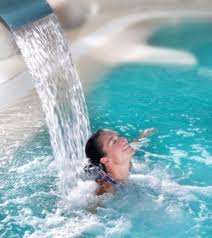
More evidence that low-calorie sweeteners are bad for your health
Studies show that artificial sweeteners can raise the risk of hypertension, metabolic syndrome, type 2 diabetes and heart disease, including stroke.

Natural Health News — For centuries people with pain have turned to natural mineral hot springs to find relief. Now a new study shows that for people with osteoarthritis not only can this treatment improve pain, it can also help reduce blood pressure.
The outcome was surprising given that people with hypertension are usually warned off treatments like saunas and hot tubs.
The Turkish study involved 2090 people with osteoarthritis (OA) of the lumbosacral region, knee, hand, and foot approximately half of whom also had hypertension.
All the study participants received balneotherapy – a form of hydrotherapy involving bathing in hot mineral springs – at the same time in the morning every day for 20 minutes. The therapy was given for 5 days a week over a period of three weeks.
Following the treatment, the participants also took part in an exercise program consisting of range of motion (ROM) and stretching exercises.
Pulse and systolic and diastolic blood pressures were recorded before and after the 15 sessions of balneotherapy.
The testing revealed a significant reduction after treatment in systolic and diastolic blood pressures in both normotensive and hypertensive people after the treatment. However the reduction in diastolic blood pressure was greater in those with hypertension.
Balneotherapy, say the researchers should be considered a safe intervention for osteoarthritis patients with essential hypertension
The power of water
Strictly speaking balneotherapy is defined as the use of baths containing thermal mineral waters from natural springs at a temperature of at least 20 °C and with a high mineral content of at least 1 g/l.
However treatment is usually more broad than simply hot mineral baths and usually includes treatments like Dead Sea salt or mineral baths, sulphur baths, and even radon-carbon dioxide baths. This type of therapy may also involve other treatments such as physiotherapy, and even the change in environment and lifestyle and these may also contribute to the benefits seen.
Of course you don’t need to go to an expensive spa to get the benefits of mineral water baths. A study last year found that soaking in a bath of salt water could help relieve the pain of arthritis.
A 2009 review in the International Journal of Clinical Practice looked at evidence from 29 trials involving balneotherapy for treating rheumatological diseases, osteoarthritis, fibromyalgia, ankylosing spondylitis, rheumatoid arthritis, chronic low back pain, psoriasis and one on Parkinson’s disease. The results showed that balneotherapy did result in reductions in pain especially in those with rheumatic and low back pain.

Please subscribe me to your newsletter mailing list. I have read the
privacy statement